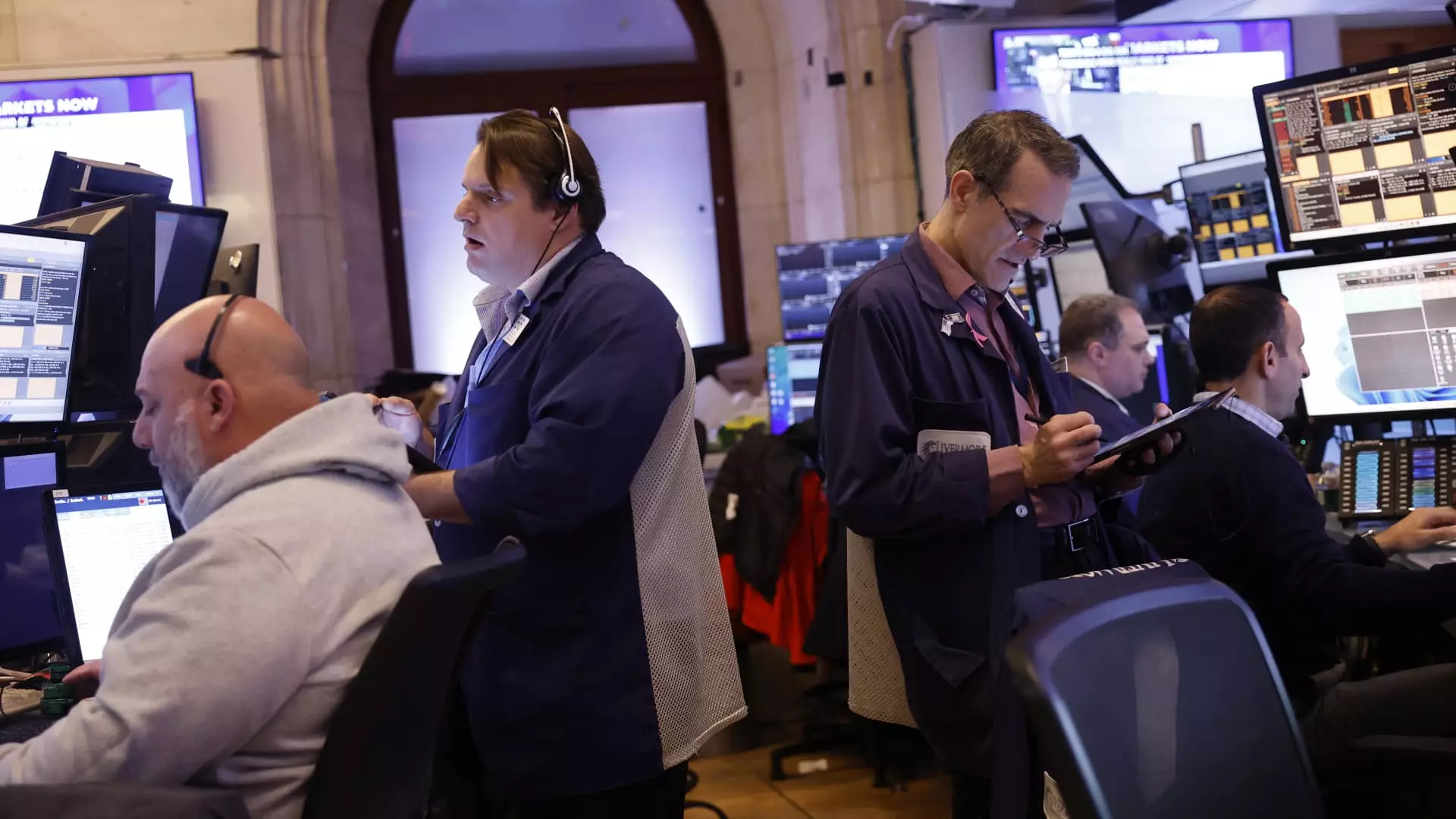The U.S. stock market has experienced a remarkable surge since the presidential election, prompting investors to take notice. According to S&P Global Market Intelligence, between November 5 and November 20, the top ten performers of the S&P 500 index saw their stock prices increase by at least 18%. Among these standout companies were giants such as Axon Enterprise and Tesla, which witnessed staggering increases of over 35% during this same timeframe. While the overall S&P 500 posted a modest gain of about 2%, certain stocks soared, leaving many to wonder what factors driven such a dramatic and, potentially, unsustainable rally.
Contextual Influences: The Role of Policy in Market Dynamics
Investment experts have indicated that much of this stock momentum can be attributed to the anticipated policy shifts associated with the incoming Trump administration. A significant aspect of this transition revolves around deregulation and a sympathetic approach to mergers and acquisitions. Analysts predict that these changes will create a favorable environment for specific sectors, particularly energy. With the new administration poised to greenlight numerous oil and gas projects, companies in these industries are ascribing their stock performance in part to favorable policy repositioning likely to emerge in a Trump administration.
One pertinent example is EQT Corporation, a major player in the natural gas market, which recorded a remarkable 24% increase post-election. This spike can be explained by expectations that new policies may support increased fossil fuel production, reversing stricter regulations from the previous administration focused on reducing greenhouse gas emissions. This correlation between government policies and stock performance underscores the critical impact of political changes on market sentiment.
In addition to political undercurrents, financial performance is also a vital contributor to stock price changes. Several companies have reported robust quarterly earnings results, creating investor optimism that further fueled stock performance. For instance, Palantir Technologies recorded an explosive third-quarter demand for its AI platform, leading to a surge in stock price after it beat Wall Street estimates. Similarly, Axon, which specializes in law enforcement technology, also outperformed expectations, raising its earnings guidance in the wake of its own earnings report. The dynamic between favorable earnings results and stock price is crucial, illustrating that tangible business performance often resonates well with investors.
Furthermore, companies such as Vistra Corp. have benefited from both policy anticipations and positive earnings releases. Following the election, Vistra’s stock jumped significantly as it positioned itself to expand energy supply contracts with large tech firms designing data centers, essential for energy-hungry AI technologies. This strategic alignment highlights a symbiotic relationship between corporate growth strategies, investor expectations, and emerging technological needs.
It’s impossible to discuss the stock performance of Tesla without mentioning the influence of its CEO, Elon Musk. Described by some analysts as having an “Elon Musk premium,” Tesla’s stock price surged following Trump’s victory. With Musk being one of Trump’s backers and appointed to help lead initiatives aimed at improving government efficiency, the connection cannot be overlooked. Just within days post-election, shares of Tesla rose almost 30%, an impressive leap that some attribute to the expectation of favorable policies towards electric vehicles.
Critically, the anticipated elimination of the $7,500 federal tax credit for electric vehicles under President Trump has been recognized as a potential double-edged sword. While Tesla may initially benefit from less competition in the short term, the long-term implications of such policy choices can reshape the competitive landscape in the EV market. Investors should remain cautious, recognizing that reliance solely on stock momentum or market buzz can overlook larger trends and risks that may materialize as policies evolve.
The stock market’s ascent following the 2022 presidential election presents a complex landscape for investors. While the surge of major U.S. companies may initially excite as a sign of bullish market sentiment, it also encapsulates underlying risks and uncertainties. The intertwining of political influences, corporate performance, and unique individual factors such as Elon Musk offers a multifaceted view of stock market dynamics.
Investors should take a prudent approach to investing during this volatile period, focusing on sustainable growth drivers and maintaining awareness of both political and economic shifts that might influence their investments long-term. Recognizing that short-term trends can be fleeting is imperative, urging caution before making hasty investment decisions based solely on the latest market buzz.

